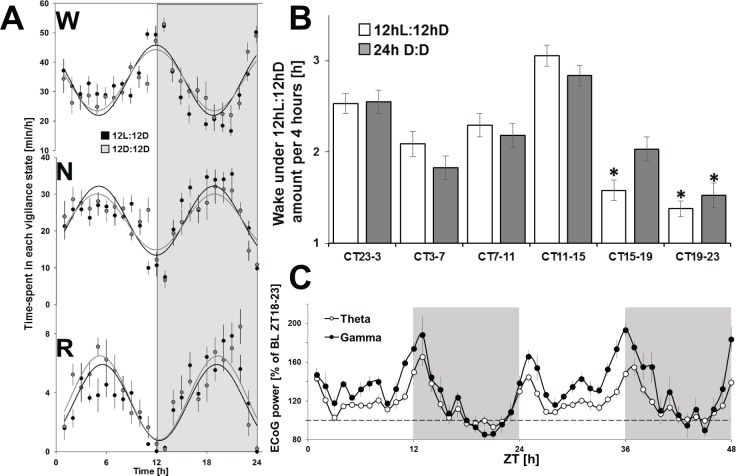Figure 5.
Crepuscular regulation of sleep and waking. (A) Sine-waves were calculated for each vigilance state to determine their mathematical profile during 12hL:12hD (gray) and 24h D:D (black). No significant difference was observed between the two conditions. (B) Amounts of wake per periods of 4 h centered on the (subjective – gray bar) D-L-D transitions show predominant wake activity at (subjective – gray bar) circadian time points (CT) and an increased wake during the (subjective – gray bar) light period outside of the (subjective – gray bar) crepuscular zone, as compared to the dark (subjective – gray bar) period outside the (subjective – gray bar) crepuscular zone. Asterisks denote significant differences (P < 0.05) by t test, between the different 4-h periods. All values are expressed as mean ± standard error of the mean. (C) Time-course of electroencephalography theta and gamma power spectrum during waking epochs expressed per hour across the two baseline days. D, dark; L, light; ZT, Zeitgeber time.

